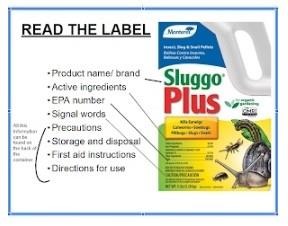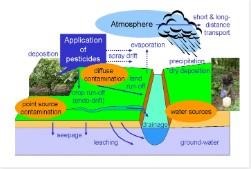Enter the integrated pest management method of pest control. Integrated pest management (IPM) is a science-based approach to managing pests using more environmentally friendly methods. IPM is a process that you can use to solve pest problems while minimizing risks to people and the environment. It can be used to manage all kinds of pests in urban, agricultural, and wildland or natural areas.

Pesticides are designed to be toxic to the pests they target, be it insect, plant disease, weed or any other unwanted garden intruder. When used properly, they work quite well at their assigned tasks. Key phrase is ‘when used properly'. The idea of the IPM method is that all other options are exhausted prior to the use of any pesticide and, when pesticide use is warranted, to use the least toxic option because pesticides are indiscriminate and will even kill those much needed ‘good guys'–be they beneficial insects or your much prized petunias.
When looking for pest management solutions, prevention is the key. Healthy plants are the best defense against pests. Provide plants with proper fertilization, irrigation, and other practices that support vigorous growth. Healthy plants can tolerate a certain amount of damage from pests and may not need to be treated. If you have a plant that's not doing well, sometimes the best solution can be to remove it and plant it somewhere else. Remember to plant the right plant, in the right place, under the right climate conditions. Before purchasing a plant, be sure to check for any insects and disease they are prone to harbor.
When problems develop, identifying the pest or problem is the first and most important step. Once you have identified your pest or problem, you can proceed to assess management options. Is it caused by an insect pest, a vertebrate pest or maybe a disease or perhaps it is an abiotic problem? All this information is essential to planning your attack. Once you have identified your problem you can research solutions.
The key to identification is observation and this UC IPM link http://ipm.ucanr.edu/PMG/PESTNOTES/index.html can help with this identification process. Following the prompts you can discover your pest and learn about what IPM options to use. These options will be listed from cultural controls, e.g. creating barriers and use of mulch to the least toxic chemical controls. Getting information from other knowledgeable experts like your local UC Master Gardeners is a good strategy as well. Once your pest ID is established you can proceed with the correct control method.
If the purchase of pesticides is the correct method, always make sure to read the label. This UC IPM link covers it all http://ipm.ucanr.edu/PMG/PESTNOTES/pn74126.html . The label will give you all the information you will need to make that final purchase. Be sure the type of plant or site you plan to treat is listed on the label. Do not to use pesticides labeled for use on ornamental plants on plants that will be consumed. Don't use pesticides labeled for outdoor use indoors and remember that pesticides can seriously damage some plants; read the label to be sure any treated plants won't be damaged by its use.
Finally, when making your pesticide choice remember that most will only control certain stages of the development of the pest. Many only kill larvae, not the eggs. Others only kill the adults. Many fungicides are preventative and won't kill existing infections. Equally, some herbicides only kill germinated weeds but not established ones. The list goes on and only supports the instruction to read the label of any pesticide every time to make sure your selection is the best one for the job.

Always remember that pesticides are designed to be toxic to the targeted pests. When used property pesticides can protect your plants or home from damage but when the label instructions are not followed properly whole new problems can arise: Plants can be injured, pests will remain unaffected, your family's and pet's health can be impaired and the pesticide can pollute soil, air or water.
Before purchasing a pesticide learn all you can about the material, how to correctly use it and how to properly dispose of the empty container. Also, don't purchase the large bargain container. Only purchase the amount needed for the current job. Each time rethink any pesticide purchase and consider if a non-chemical option is the better bet.
We hope these last few week's articles on invertebrate pests, the beneficials, the IPM method and pesticides information and uses have helped you become educated, informed and empowered to feel more confident in your garden when it comes to exploring and choosing the best pest management, prevention options and solutions. Go forth and conquer.
Source : ucanr.edu